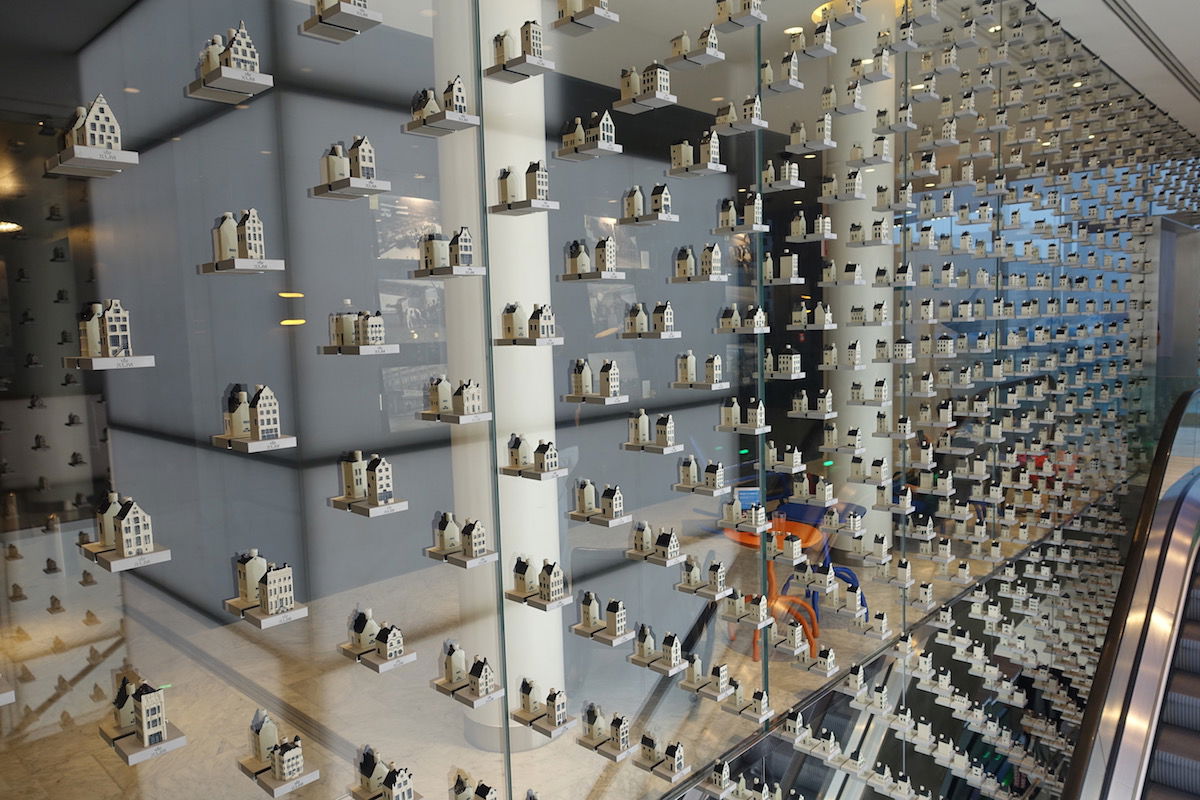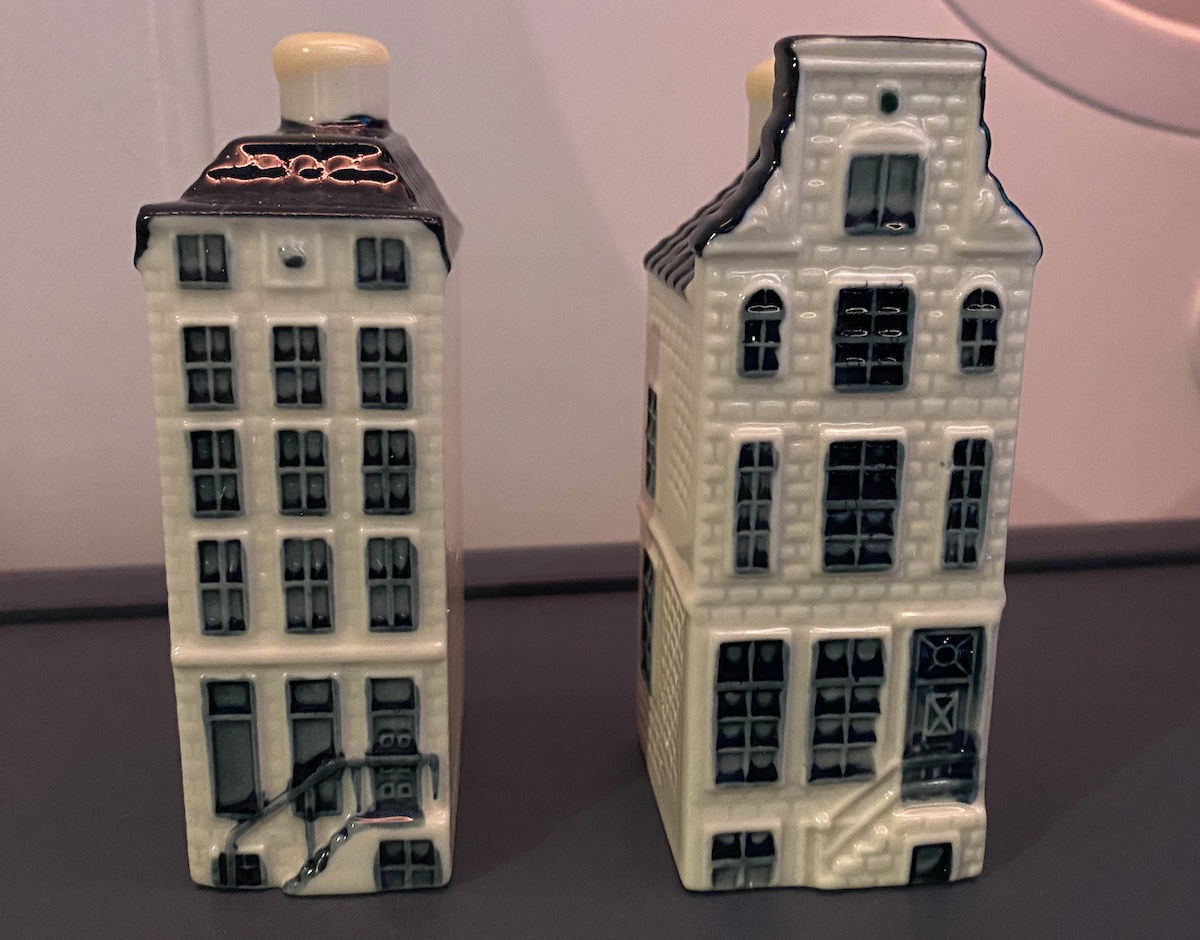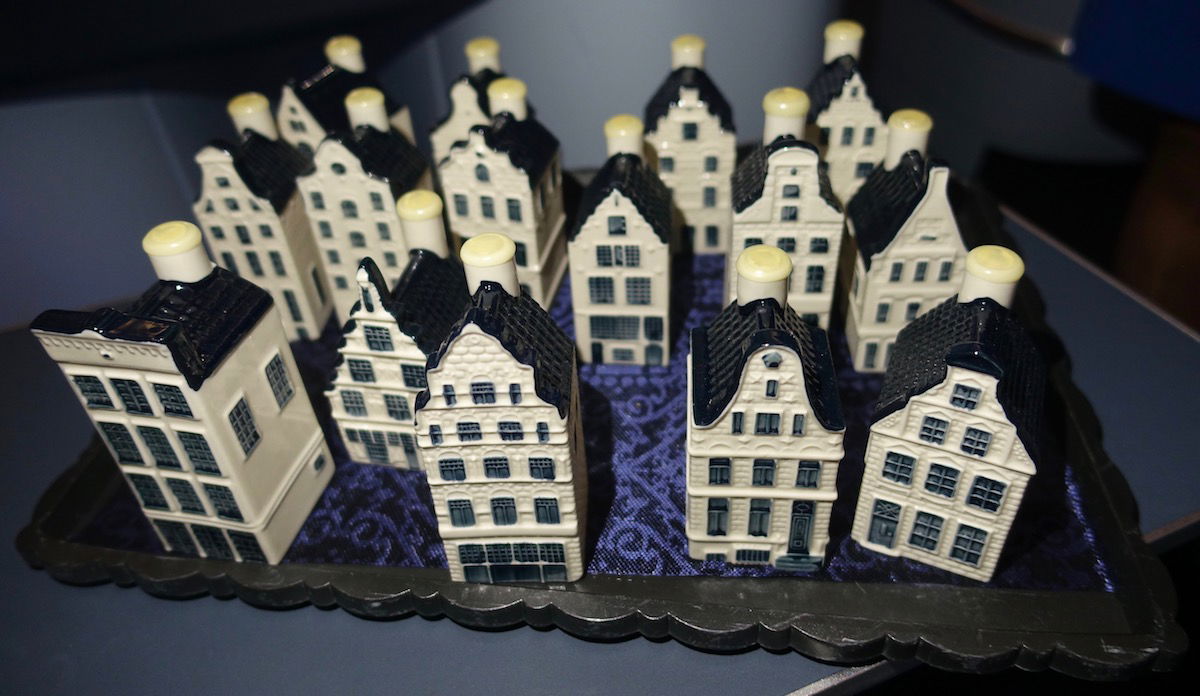When it comes to airline collectibles, there’s no airline quite as cool as KLM. The Dutch carrier offers its long haul business class passengers miniature collectible houses, which are adorable enough to turn anyone into a collector. This might just be even cooler than Lufthansa’s collectible first class ducks.
So, let’s talk about KLM’s miniature houses — what’s their history, what makes them interesting, and how do you get them?
In this post:
What’s the history of KLM’s Delft Blue houses?
The history of KLM’s houses is probably the single thing that makes them the most intriguing. Prior to the Airline Deregulation Act of 1978, the United States’ Civil Aeronautics Board (CAB) regulated most aviation policies, including fares, routes, and schedules.
This was intended to create a level playing field between airlines, and one of the regulations prohibited airlines from providing passengers with tangible incentives for booking them over a competitor.
Well, in 1952, KLM found a loophole. As a gift for people choosing to fly with KLM, the airline started passing out little blue-and-white ceramic houses filled with Bols Genever gin. But wait, isn’t that a tangible incentive?
KLM argued that it wasn’t a gift, but rather the airline was just serving to-go drinks. At the time, KLM replied to the critics with “is there a law that tells us drinks have to be served in a glass?”
That’s how the KLM miniature house mania started, and the rest is history…

How many KLM Delft Blue houses are there?
KLM currently has 105 different Delft Blue houses, one for each year that the airline has been in business. That’s another thing that makes this so cool, as the airline releases a new one each year, specifically on October 7, which is KLM’s birthday. So in 2024 we saw the 105th house introduced, and later in 2025, we can expect the 106th house to be introduced.
Now, since KLM didn’t offer these houses when it first launched, it had to do some “catching up.” So a couple of times we’ve seen the airline release more than one in a year. For example, in 1994, on KLM’s 75th anniversary, the airline released 15 houses. However, on an ongoing basis we now see one new house each year.
A few other interesting facts about these KLM houses:
- They measure at most 10 cm x 5.5 cm
- They each depict a real Dutch house, with some being generic, and others being rare or special, such as the Rembrandt house and Anne Frank house
- All houses are in greater Holland, but only a little over 50 are in Amsterdam; also, house #85 is located in Willemstad, Curaçao
- The “houses” aren’t actually all houses, with some being of buildings of historical or architectural interest, like the Heineken brewery, the former KLM headquarters, and more
- KLM produces around 850,000 of these per year, though roughly 150,000 of them don’t have gin, as they’re used for destinations to and from the Middle East, where alcohol may be prohibited

How can you get KLM Delft Blue houses?
The primary way to get a KLM Delft Blue house is to fly an intercontinental flight in KLM business class. Toward the end of the flight, the crew will come around with a tray displaying these Delft Blue houses, and you can pick one. This is available on all intercontinental flights, and you’re limited to one per person.
The airline generally stocks a few different houses on each flight, though only a handful are in circulation at any given point in time.
Each house contains a number on it, corresponding to the number that it is in the collection. For those who are serious about collecting these houses, KLM has apps for Apple and Android, so you can keep track of your collection, and also learn the backstory of each house.
Note that while you can only get these houses directly from KLM onboard, there is quite a secondhand market for these, and you’ll find a lot of people selling KLM houses online.

Bottom line
KLM’s Delft Blue houses are not only cool for avgeeks and collectors, but they also have quite an interesting history. They were introduced many years ago as a workaround to incentivize passengers to book KLM, and the airline has been releasing a new one every year since.
I think the history is half of the fun of these, so if you’re flying KLM but weren’t familiar with the backstory, now you know…
What do you make of KLM’s miniature houses?





That's a lot of fun- wish more airlines did something like that!
Little secret, there is only 104 houses as 11 and 23 are the same house they released twice! I am not sure, but it would be interesting to find out why!
The problem is that the price of KLM business class these days is not worth for collecting the house. Interesting that they do not sell them too
As you wrote, each flight has a limited selection of house types to choose from — but the Crown Lounge in Schiphol has more, and they’re happy to swap if you didn’t get the one you wanted (although the choice available in the lounge is wider, it is never complete).
Wow! great tip!
Great article, really enjoyed it (as a collector of blue and white porcelain). But as some others have pointed out: how does an American govt body have the 'right' to dictate what KLM can and can't do in it's global operations and non-American flights?! More research/corrections needed here?
Had about 20 of these. But person who rented my home took them sadly.
Flying KLM business class for the first time in a few weeks, and this is the primary reason I'm excited for it.
You're missing the best ones :) There are some specials that you can't get anymore, for instance when you did your Honeymoon in their First Class, called Royal Class, back in the day. Some more specials are there, but one that you can still get today is "Paleis op de Dam", which is twice as wide as the normal one. You get it when you reach Platinum for Life, which I just did.
Some specials can be found here: https://www.klmhuisjes.nl/14-specials
The CAB absolutely did not have any say in this. The CAB was an American regulator that had absolute control over domestic routes within North America. It had absolutely no say over what a Dutch airline could do on its international routes, most of which did not even touch North America.
The real regulators that caused this would have been Dutch regulators or the IATA - International Air Transport Association. These were the regulators that...
The CAB absolutely did not have any say in this. The CAB was an American regulator that had absolute control over domestic routes within North America. It had absolutely no say over what a Dutch airline could do on its international routes, most of which did not even touch North America.
The real regulators that caused this would have been Dutch regulators or the IATA - International Air Transport Association. These were the regulators that would have had a say on what a Dutch airline could do on their routes, whether it was from Amsterdam to New york or from Amsterdam to Jakarta. You really should do better research if you're going to make claims like this and update your post accordingly.
However it was related to regulations prohibiting airlines from giving gifts to customers. To get round it, KLM offered the last drink in the house.
Right, but it had nothing to do with the CAB. The CAB didnt regulate KLM.
Why anyone would collect Skyteam collectibles is beyond me, but hey, each to their own.
Well, it's not that I choose my flight because of the houses. But, with AMS as homebase, I now collected 90. It's a welcome break of the flight when they come by, have a chat, and find one you don't have. And they look nice in a row in the office. Many I collect on business. But, some are collected during special trips, like our honeymoon or a trip to Africa and a US West-coast tour with the kids. Where you get 4 per flight. They are nice souvenirs.
But if you live in AMS, I would fly through MUC/FRA with LH so you don’t have to experience the awfulness of skyteam
E39, you sound like you haven't been much to Europe or even on a single Lufthansa flight before. Star Alliance is great in Asia but in Europe, it's not the best alliance. LH, Brussels, Croatia, Lot, Tap are ok on their best days, but below average otherwise.
Also flying through FRA/MUC to get to and from the Americas from AMS involves backtracking that just isn’t worth it for some.
Also KLM isn’t the best airline in the world but it isn’t awful either. On a good day it can be above average.
@Aaron — Absolutely, KLM is not the worst, but skyteam is. I’ll quote a great person from ORD «if I fly star - I’ll go far. If I fly sky I’ll probably die»
Lufthansa is in star alliance so automatically 184847281 times better.
To be honest Air France > Lufthansa.
If I wanted to get to and from AMS on a non-direct flight would much rather transit via CDG on AF.
@Martin — True, as an European, I have never been there nor have I ever lived there, imagine that
As a neutral but very frequent flyer, I’d turn your question on its head and ask why anyone in their right mind would want to fly Lufthansa when the alternative is KLM.
Also, the houses are nothing to do with the Skyteam brand: they’re very much uniquely KLM. I’d say absolutely collectible, though obviously not enough to sway my purchase decisions.
@Lifetime OWE — because KLM is in skyteam, Lufthansa is not
E39- you must be an incredibly interesting people to have a conversation with at a dinner party or a cocktail bar.
You make a statement with zero logic to it, and then try to explain it by repeating it as is.
@Dank — All I know is that Skyteam is the worst!!!